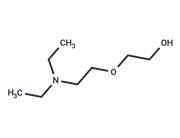| Name | FCCP |
| Description | FCCP (Trifluoromethoxy carbonylcyanide phenylhydrazone) is an oxidative phosphorylation (OXPHOS) inhibitor and mitochondrial proton carrier uncoupler. FCCP is often used as an apoptosis inducer. |
| Cell Research | Protein synthesis rate is assayed in 24-mm diameter multi-well dishes with fresh medium containing 0.175 Ci/mmol of [3H]methionine (200 μM), for 30 min at 37°C. PC12 cells are treated with FCCP for different period of times. (Only for Reference) |
| In vitro | METHODS: Rat ventricular myocytes were treated with FCCP (10-1000 nM) for 1400 sec, and cellular oxygen consumption was measured using a Clark Oxygen Electrode.
RESULTS: Oxygen consumption increased significantly, immediately, and in a dose-dependent manner after the addition of FCCP. [1]
METHODS: Rat adrenal medullary chromaffinoma cells PC12 were treated with FCCP (30 µM) for 0.5-2 h. The rate of protein synthesis was measured using [3H]methionine.
RESULTS: FCCP treatment produced a strong inhibition (68%) of protein synthesis rate for at least 2 hours. [2] |
| In vivo | METHODS: To test the effect on stroke, FCCP (1 mg/kg) was injected intraperitoneally into a C57BL/6J mouse model of stroke, followed by one hour of transient middle cerebral artery occlusion (tMCAO).
RESULTS: Infarct volumes in the cortex, striatum, and whole hemisphere were significantly increased in mice pretreated with FCCP. Mice receiving FCCP had significantly increased neurologic deficit scores compared to carriers. [3]
METHODS: To assay anti-tumor activity in vivo, FCCP (1 mg/kg) and cisplatin (2 mg/kg) were intraperitoneally injected every two days for two weeks into C57BL/6 mice harboring mouse ovarian epithelial carcinoma tumor ID8.
RESULTS: The combination of FCCP and cisplatin inhibited tumor growth via OMA1-induced mitochondrial and ER stress. [4] |
| Storage | keep away from moisture | Powder: -20°C for 3 years | In solvent: -80°C for 1 year | Shipping with blue ice/Shipping at ambient temperature. |
| Solubility Information | 10% DMSO+40% PEG300+5% Tween 80+45% Saline : 2.55 mg/mL (10.03 mM), Solution.
DMSO : 55 mg/mL (216.39 mM), Sonication is recommended.
|
| Keywords | MitochondrialMetabolism | Mitochondrial Metabolism | Inhibitor | inhibit | FCCP | ATPase |
| Inhibitors Related | Ciprofloxacin hydrochloride monohydrate | Phenoxyethanol | Imeglimin hydrochloride | Sodium oleate | Ciprofloxacin | Ciprofloxacin monohydrochloride | Boscalid | Revaprazan hydrochloride | 4'-Hydroxychalcone | Oleic acid | L-Histidine | Nicotinamide N-oxide |
| Related Compound Libraries | Cuproptosis Compound Library | Apoptosis Compound Library | Glycometabolism Compound Library | Bioactive Compound Library | Membrane Protein-targeted Compound Library | ReFRAME Related Library | Mitochondria-Targeted Compound Library | Anti-Aging Compound Library | Bioactive Compounds Library Max | Covalent Inhibitor Library | Fluorochemical Library | Anti-Cancer Compound Library |

 United States
United States






